Here’s an overview of 20 inspiring stair‐runner ideas showcasing a range of materials, patterns, and installation techniques to enhance both the style and function of your staircase. You’ll find solutions ranging from bold geometrics and classic stripes to sustainable natural fibers, pet-friendly designs, and creative DIY approaches. Each concept highlights key benefits—such as noise reduction, improved traction, and aesthetic impact—while offering tips on material choice, pattern scale, and installation for lasting beauty and safety.
1. Bold Geometric Patterns
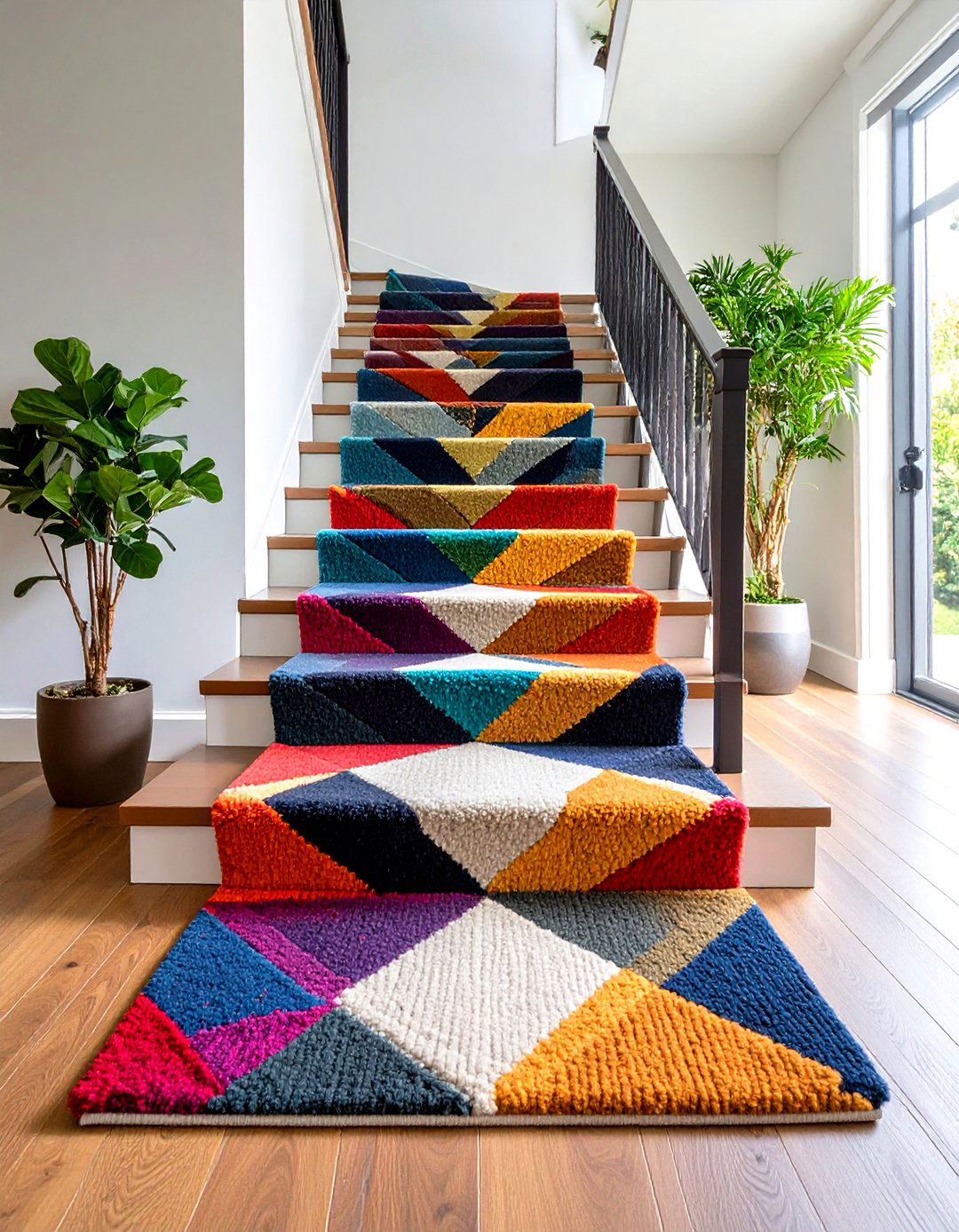
Opting for a geometric-print runner instantly makes your staircase a visual focal point and can complement minimalist interiors with a modern edge. These patterns work especially well on wide‐tread stairs, where the full design can be appreciated at each step. Durable wool or synthetic fibers help these bold shapes retain color vibrancy and resist wear in high-traffic areas.
2. Classic Striped Runners

Striped stair runners lend a timeless look while visually elongating steps, creating a sense of depth in narrow hallways. Whether you choose pinstripes for subtle contrast or wide bands for drama, stripes pair well with both traditional and contemporary decor. Low-pile wool blends ensure that stripes remain crisp under daily foot traffic.
3. Natural Sisal or Jute

Natural-fiber runners—such as sisal or jute—add organic texture and warmth, perfectly suiting coastal, farmhouse, or bohemian decors. These materials are inherently durable and conceal dirt well, making them practical for busy households. However, sisal can be rough underfoot, so consider a thin rug pad for added cush on and grip.
4. Subtle Herringbone Weave

A herringbone stair runner offers understated sophistication, with its chevron-like pattern lending depth without overwhelming surrounding finishes. This style is ideal in transitional or modern interiors, where subtle patterning enhances rather than distracts. Choose a neutral palette—such as greys or beiges—to complement hardwood treads seamlessly.
5. Contrasting Border Detail
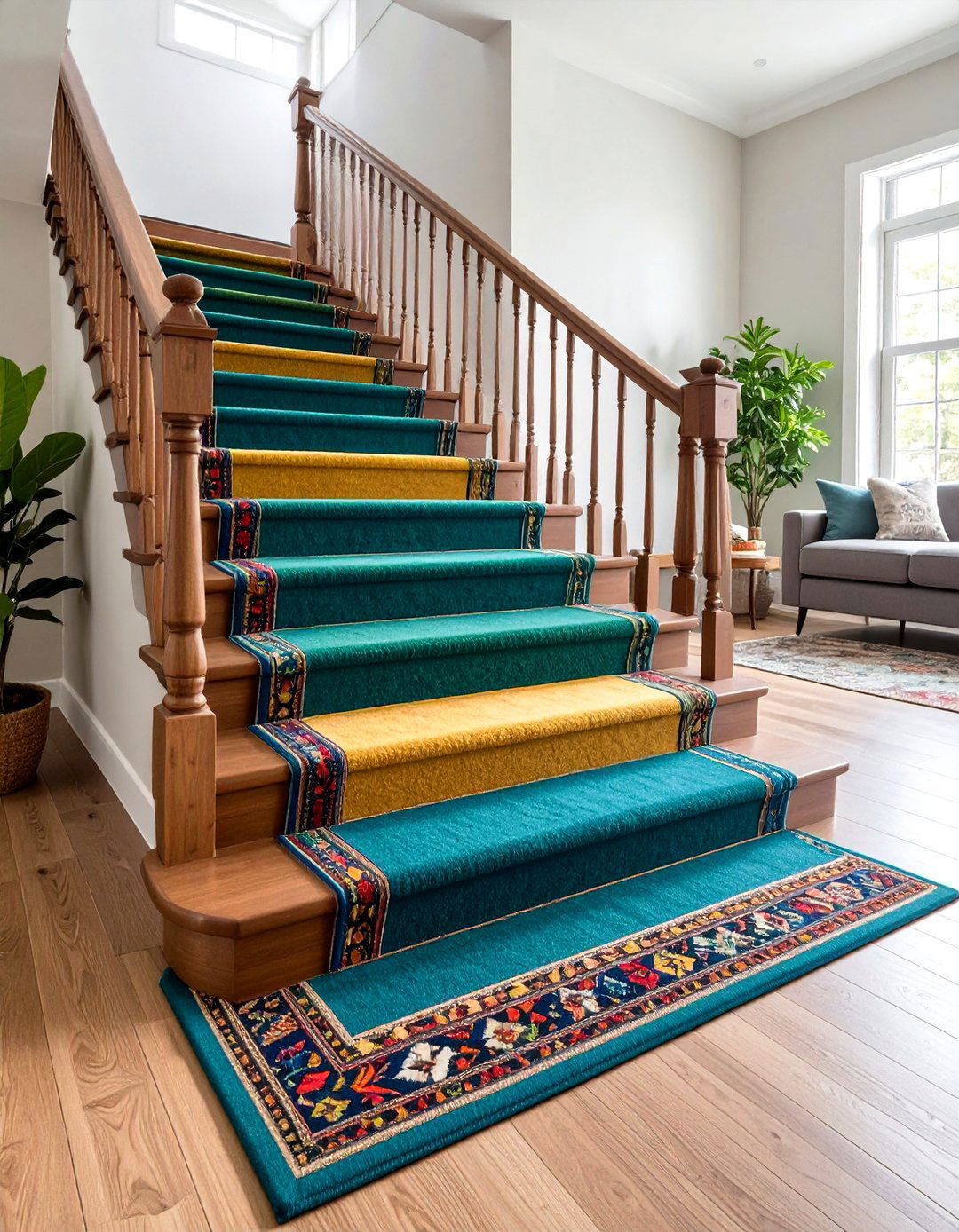
Bordered runners—with a narrow trim in a contrasting color or texture—frame each step elegantly, echoing architectural molding. The border draws the eye along the staircase, emphasizing length and adding a tailored, custom-installed appearance. Wool blends work particularly well here, as the border’s crisp lines remain sharp over time.
6. Animal-Print Accents

Leopard, zebra, or snakeskin-inspired runners inject playful sophistication and can serve as accent pieces in neutral stairwells. Use sparingly—pair with muted wall colors and simple railings to let the print shine without clashing. Synthetic blends help mimic the look and feel of exotic pelts while ensuring stain resistance.
7. Stair Rod Embellishments

Installing decorative stair rods over your runner adds old-world charm and secures the carpet in place without adhesive. Brass, iron, or wood-tipped rods hide installation staples and introduce metallic accents that complement banisters and hardware. Though primarily decorative today, rods can enhance the runner’s longevity by keeping edges flush.
8. Ombre Color Transitions
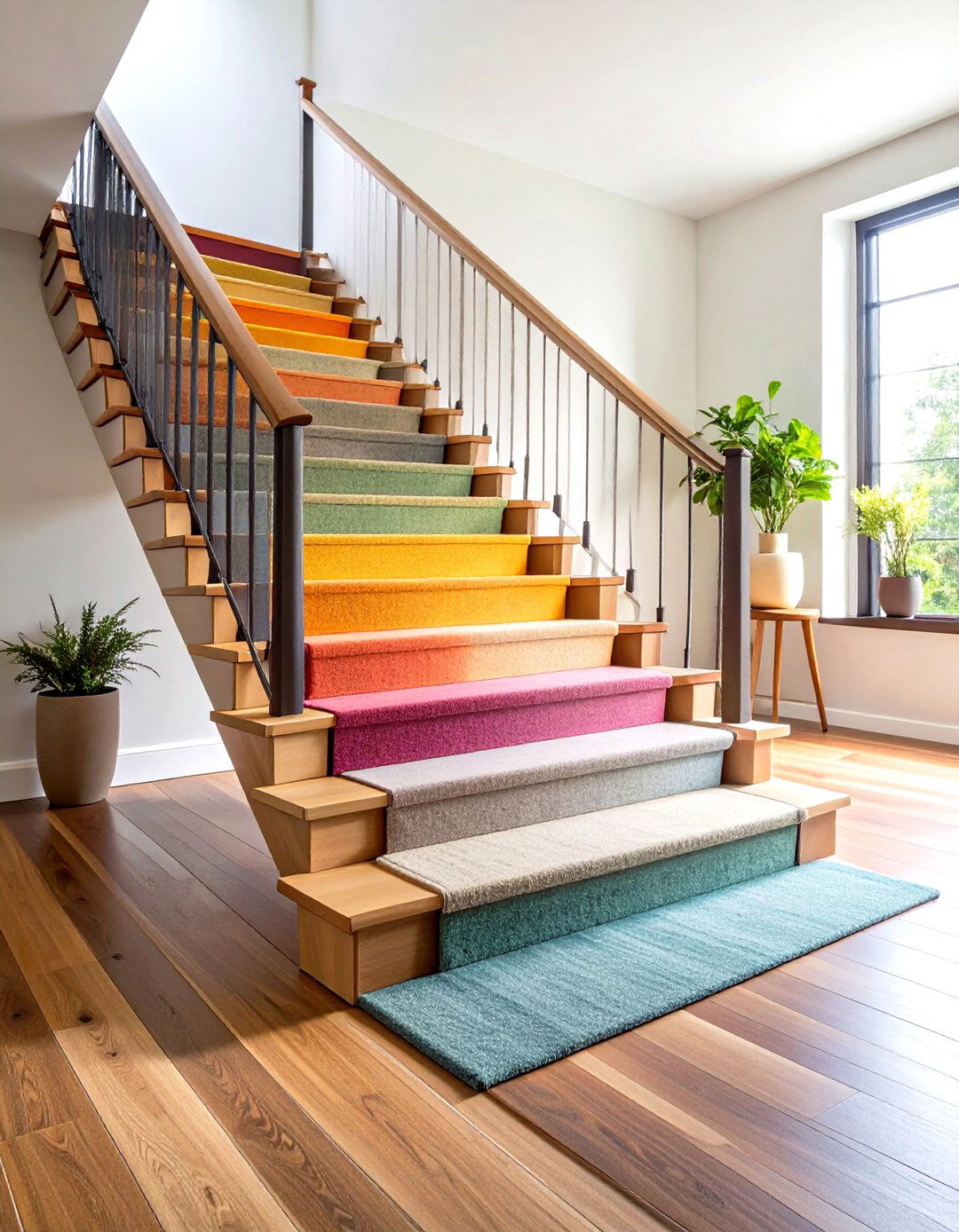
An ombre runner—fading from light to dark or vice versa—brings dynamic movement to stairs and showcases creative dye techniques. This gradient effect works best on straight runs of stairs, where the full color shift is visible from bottom to top. Wool-nylon blends hold ombre dyes well, preventing uneven fading in natural light.
9. Pet-Friendly Durable Fibers
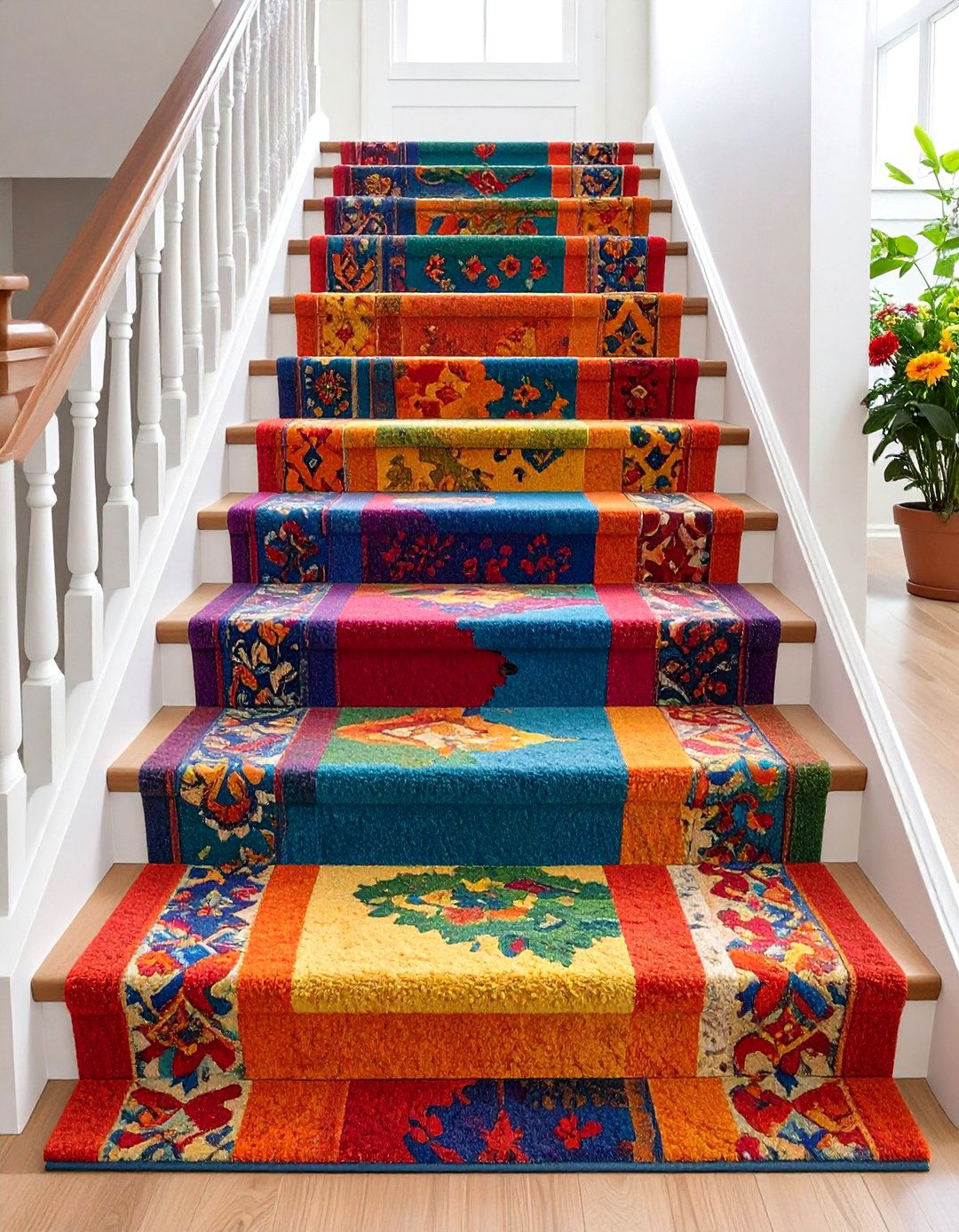
For homes with pets, choose stain-proof, low-pile polypropylene or olefin runners that resist claws, spills, and muddy paws. Patterns or multi-tone colorways help camouflage pet hair and occasional stains between cleanings. Attach runners securely with rods or professional installation to prevent slipping under excited pets.
10. Luxurious Plush Pile
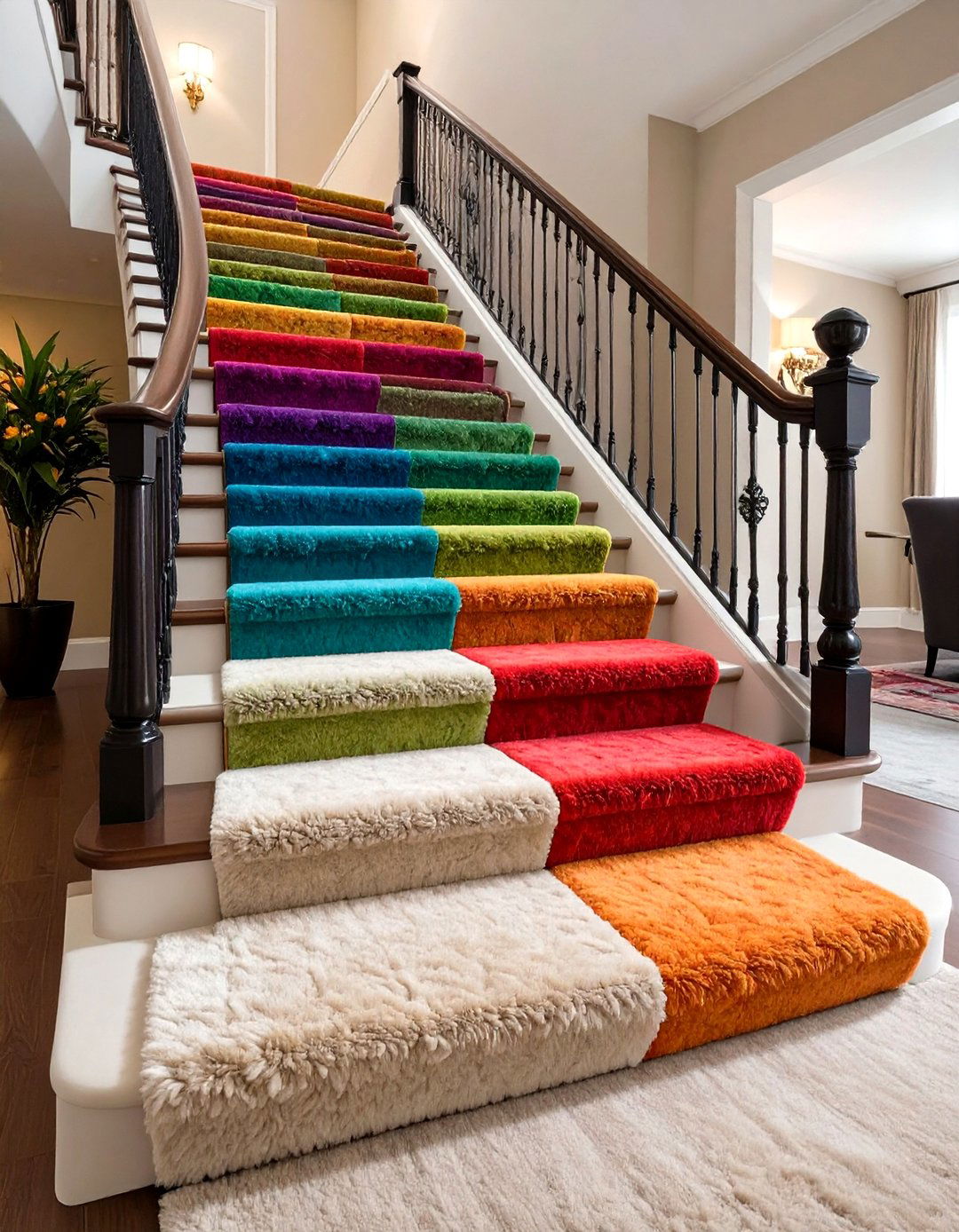
A deep-pile stair runner transforms stairs into a plush, cushioned pathway, lending hotel-like comfort underfoot. Select high-density tufted wool for resilience—so fibers spring back between passes—and avoid overly long piles that trap debris. Neutral or jewel-tone hues work well, depending on whether you seek timeless luxury or vivid accentuation.
11. Low-Profile Sisal for Sleek Lines
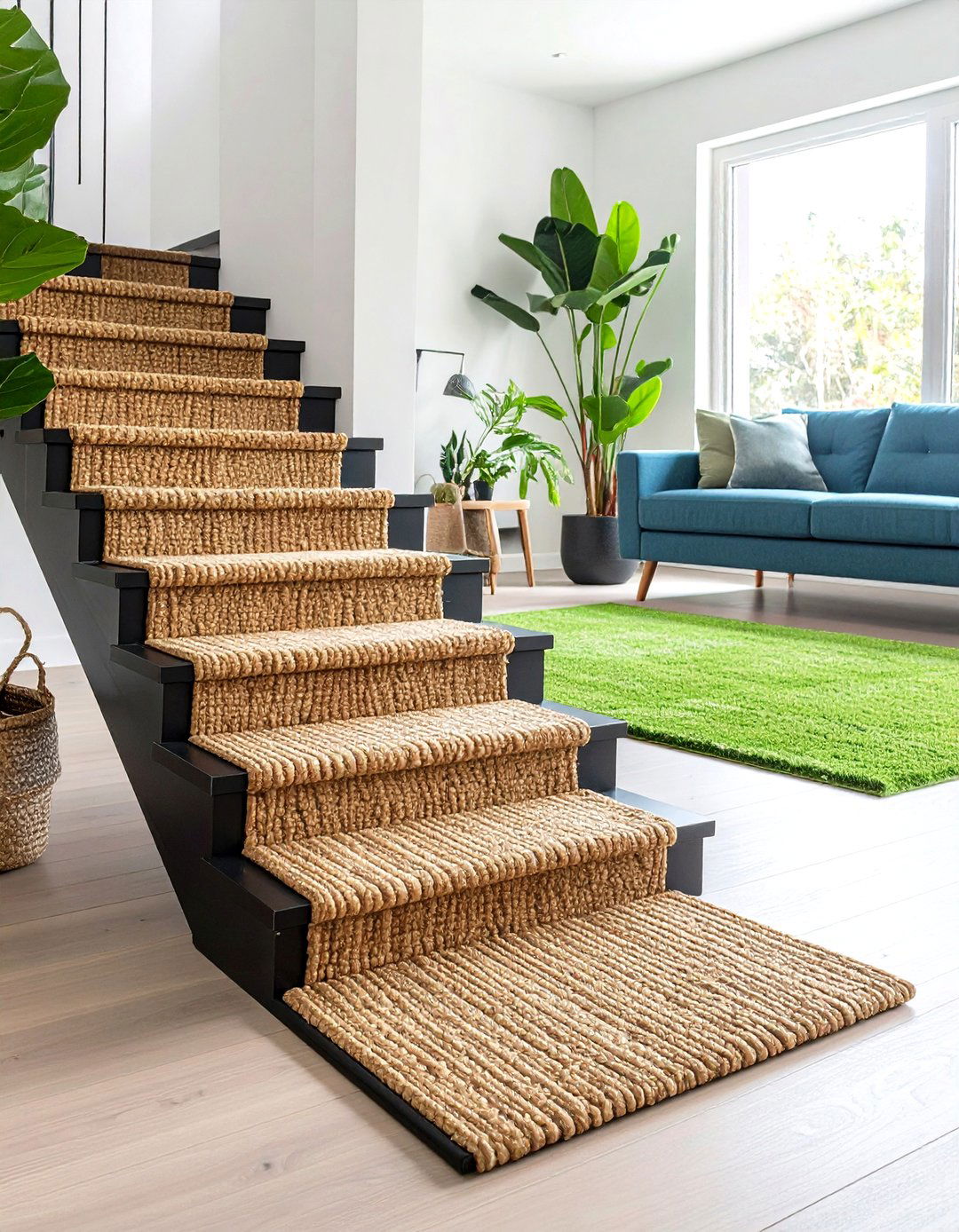
Low-profile sisal runners maintain the look of natural fiber but with a tighter, flatter weave—ideal for streamlined, modern interiors. Their slim profile allows wood borders to show approximately 2–3 inches, offering a balanced mix of wood and carpet. Since sisal can fray, professional binding at the edges preserves clean lines.
12. Painted “Runner” Illusion
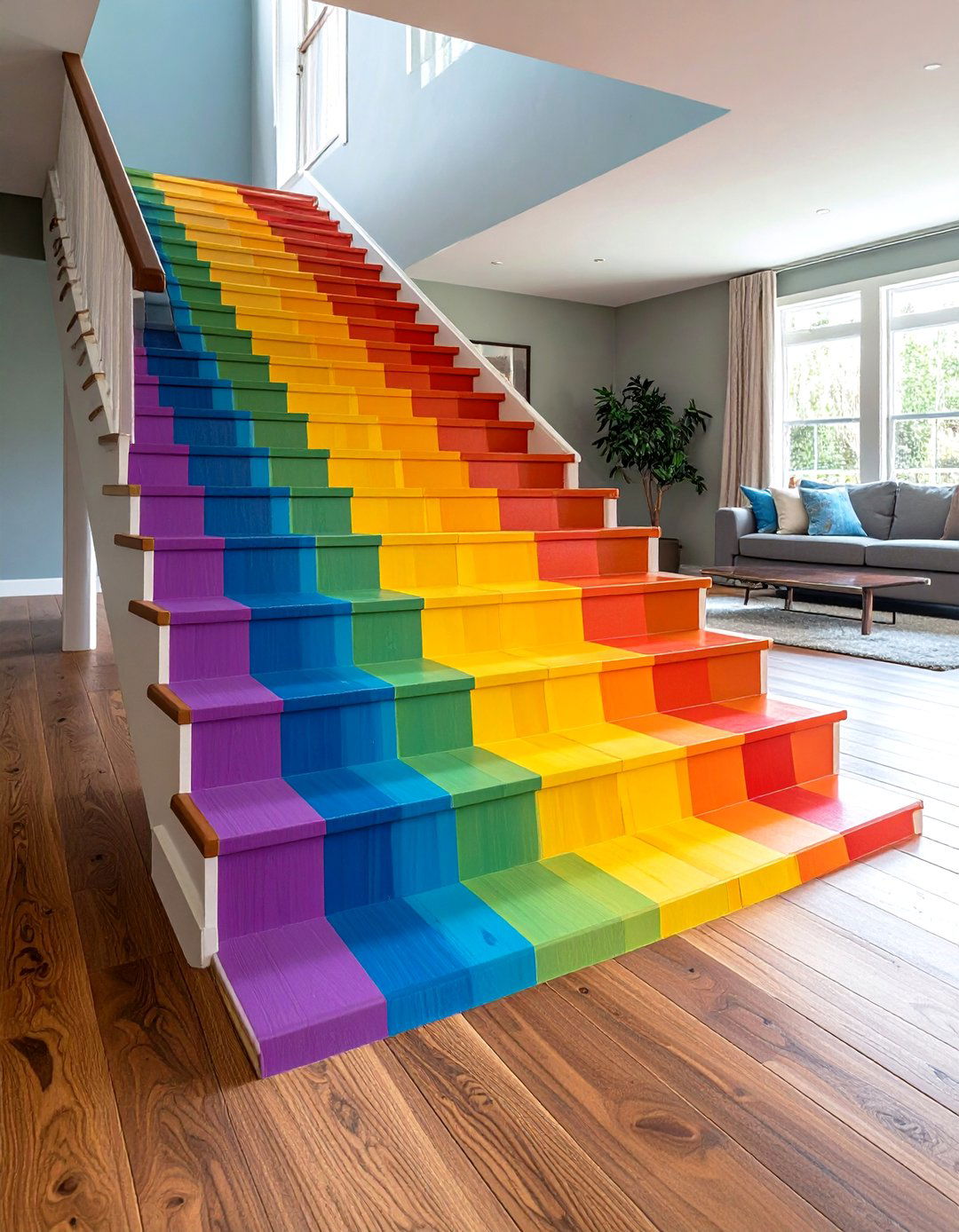
For a budget-friendly alternative, paint narrow stripes down the center of each tread to mimic a runner’s look without added materials. Use durable floor paint and sealant to withstand foot traffic, then add stair rods for the feel of real carpet. Though less cushioned, painted runners can last years with touch-ups and add a custom DIY touch.
13. Natural Kilim or Tribal Patterns
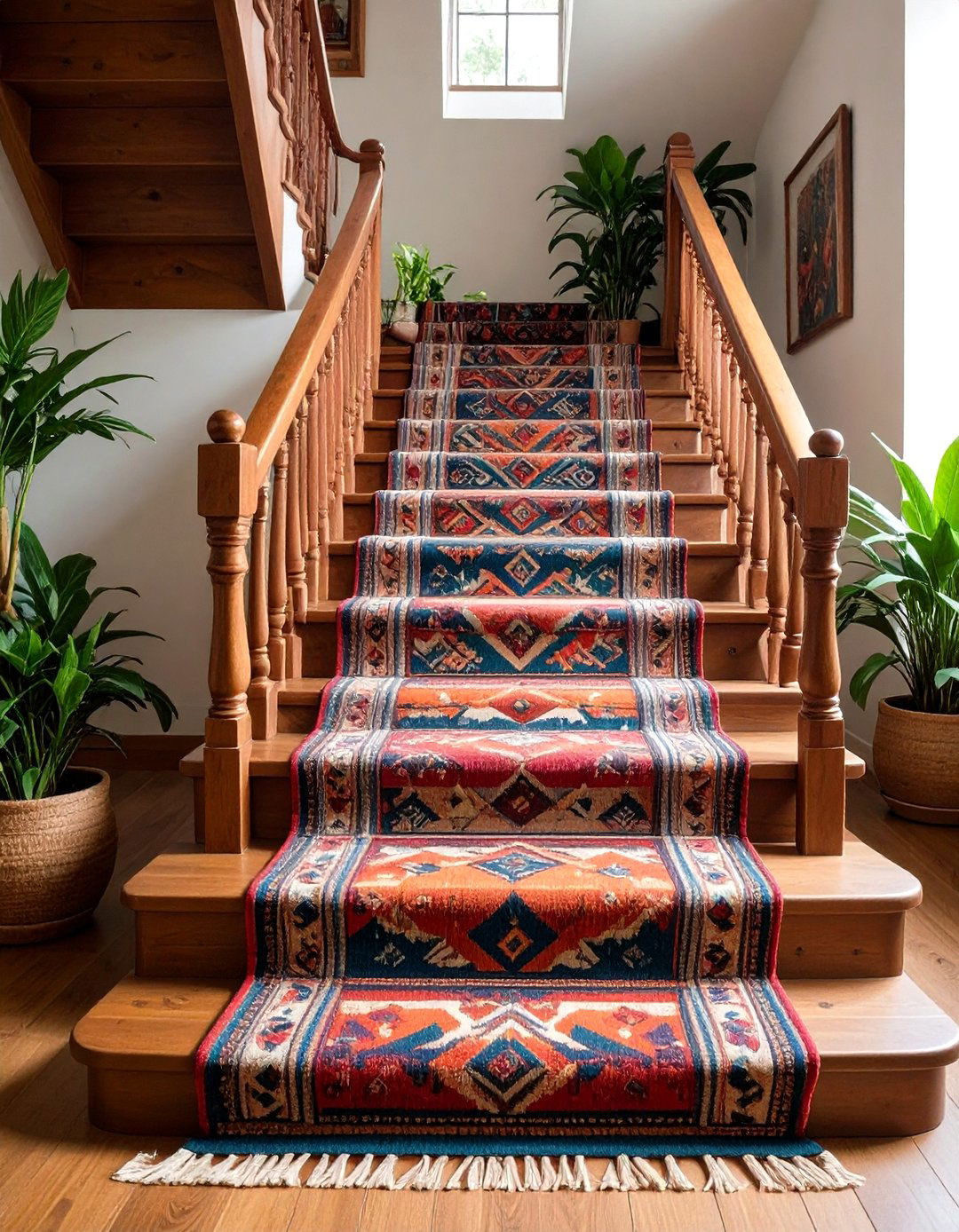
Kilim-style runners with tribal motifs bring global flair and warm color palettes to staircases, especially in bohemian or eclectic homes. The flat-weave construction makes them easy to clean and less bulky in traffic zones. Because kilims are typically hand-woven, each runner has unique variations that add authentic character.
14. Bohemian Patchwork Technique
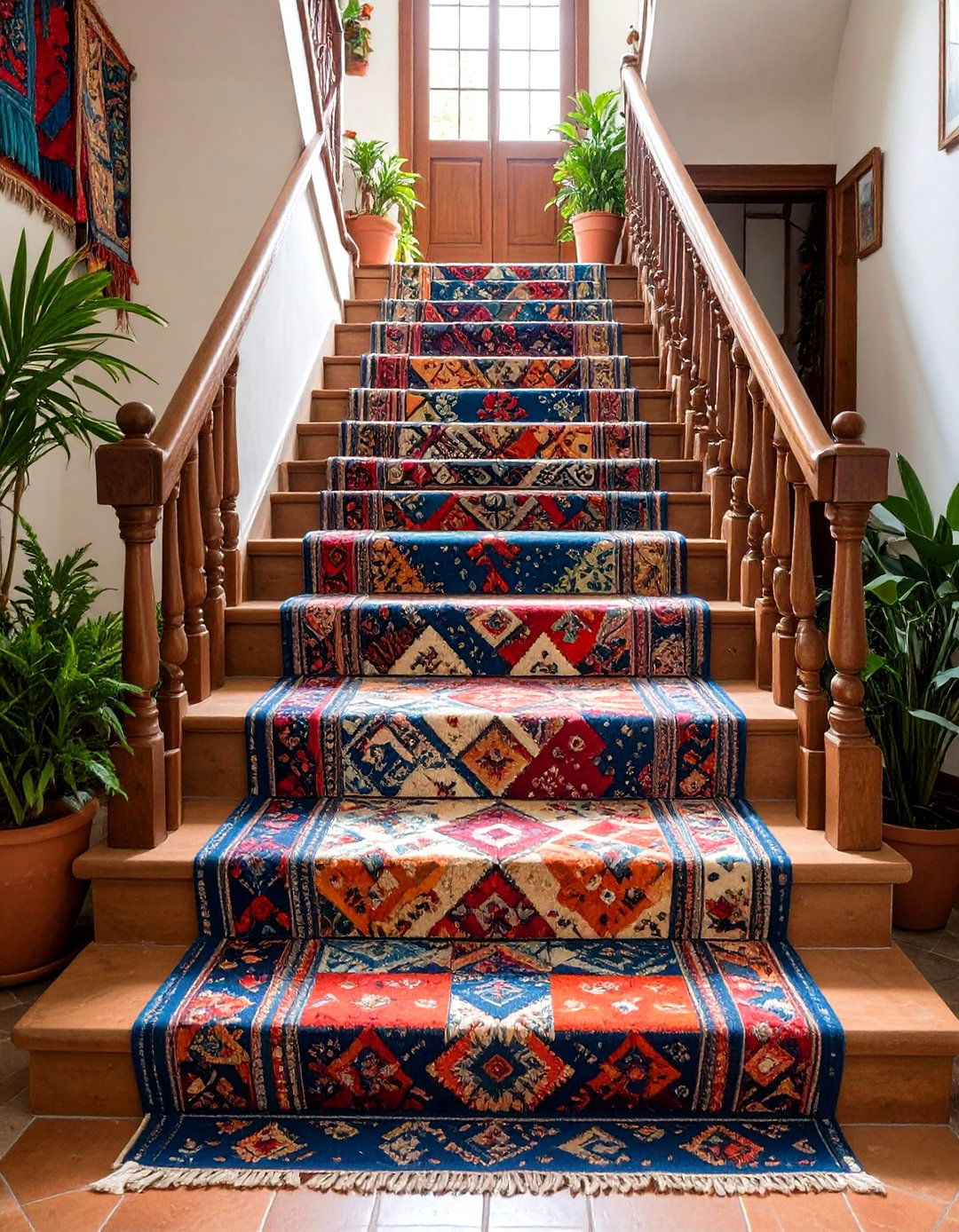
Sewing together remnant rugs or scarves creates a one-of-a-kind, bohemian patchwork runner that’s both sustainable and artistic. Studio Life.Style recommends professional stitching and a sturdy backing to ensure the patchwork holds up on stairs. This approach lets you mix textures—kilim, shag, flat-weave—for maximum visual interest.
15. Solid Minimalist Color
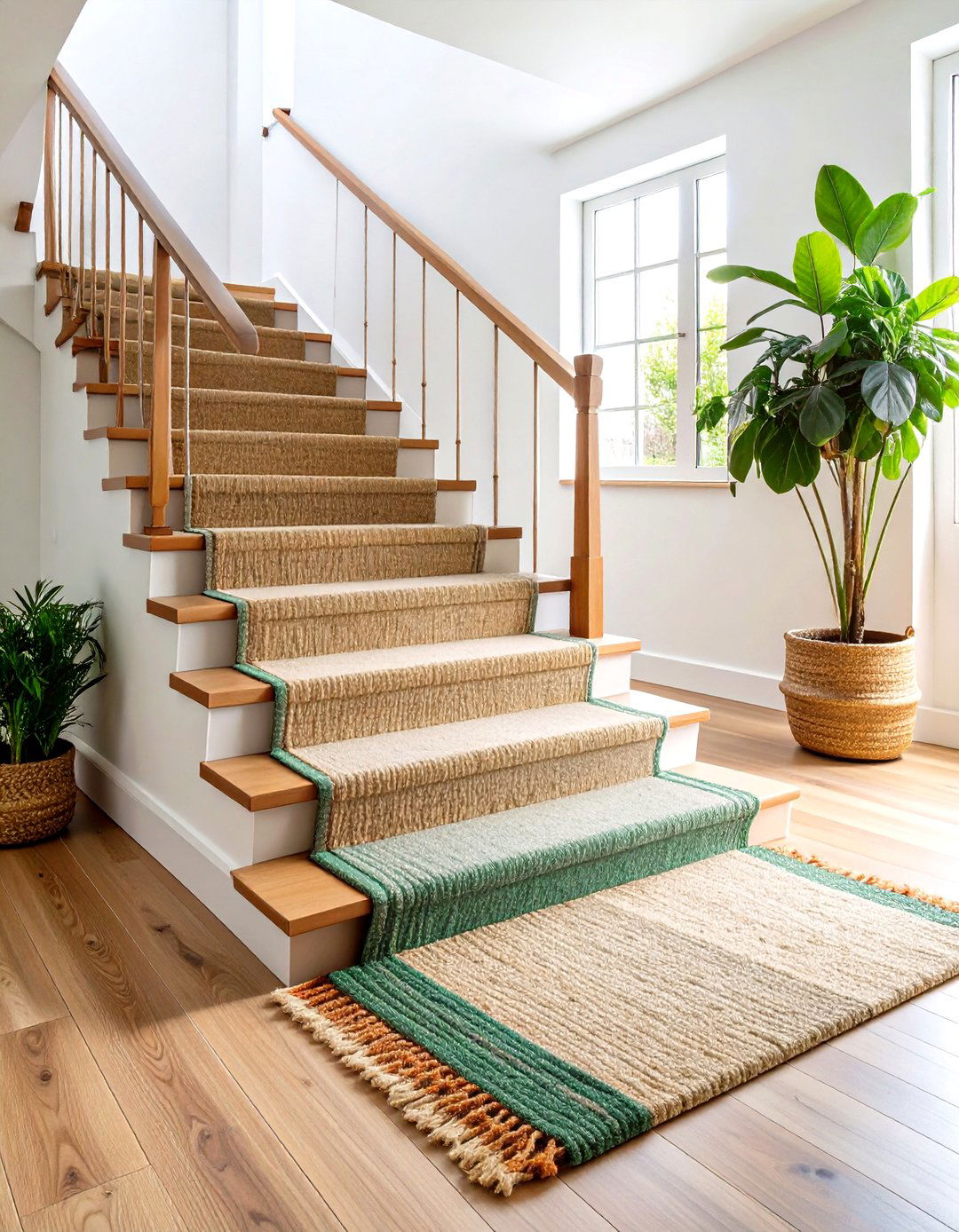
A solid-color runner in a rich, saturated hue makes a strong statement while keeping the staircase design clean and cohesive. Ideal for minimalist or Scandinavian interiors, this look emphasizes form and material over pattern. Wool-nylon blends maintain hue depth and are available in a wide spectrum—from charcoal greys to emerald greens.
16. Tonal Neutral Layers

Layering a runner in soft neutrals over similarly hued stairs creates a monochromatic, spa-like effect. Subtle shifts in texture—from low-pile to slightly higher loop—lend visual depth without overt contrast. This approach is perfect for open-plan spaces where seamless flow between floors is desired.
17. Jewel-Tone Statement Piece
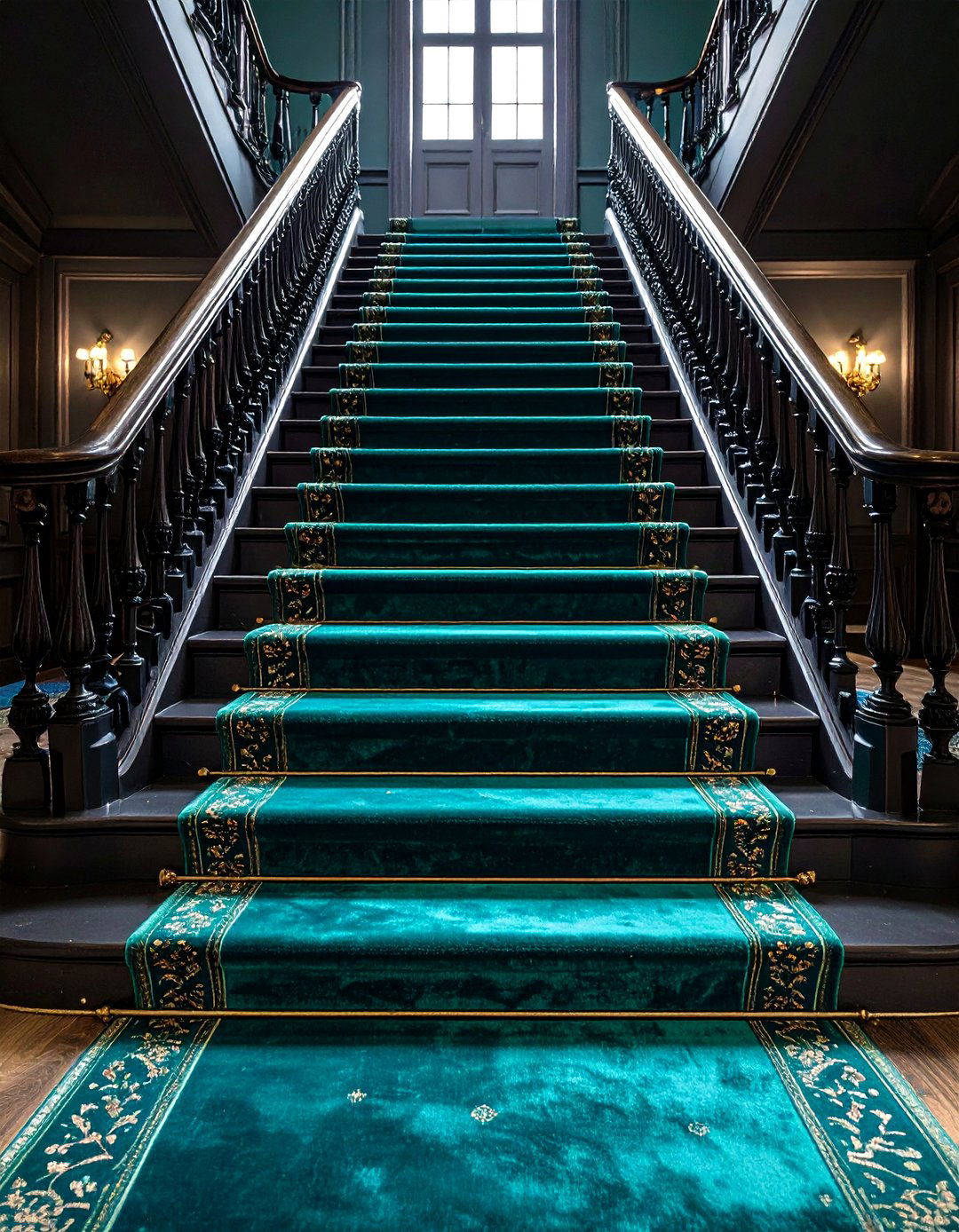
Deep jewel tones—such as sapphire, ruby, or emerald—add drama and luxury to grand staircases or entry foyers. Pair with brass stair rods and dark wood banisters for a rich, curated look. High-quality wool fibers ensure the vivid dyes stay true and resist fading over time.
18. Textured Wool Loop

Loop-pile wool runners offer a tactile, pebble-like surface that’s harder-wearing than cut-pile and ideal for high-traffic stairs. The tight loops help hide dirt and footmarks, reducing maintenance in busy households. Neutral or two-tone loops give just enough pattern to disguise wear without dominating the space.
19. Outdoor-Style Synthetic
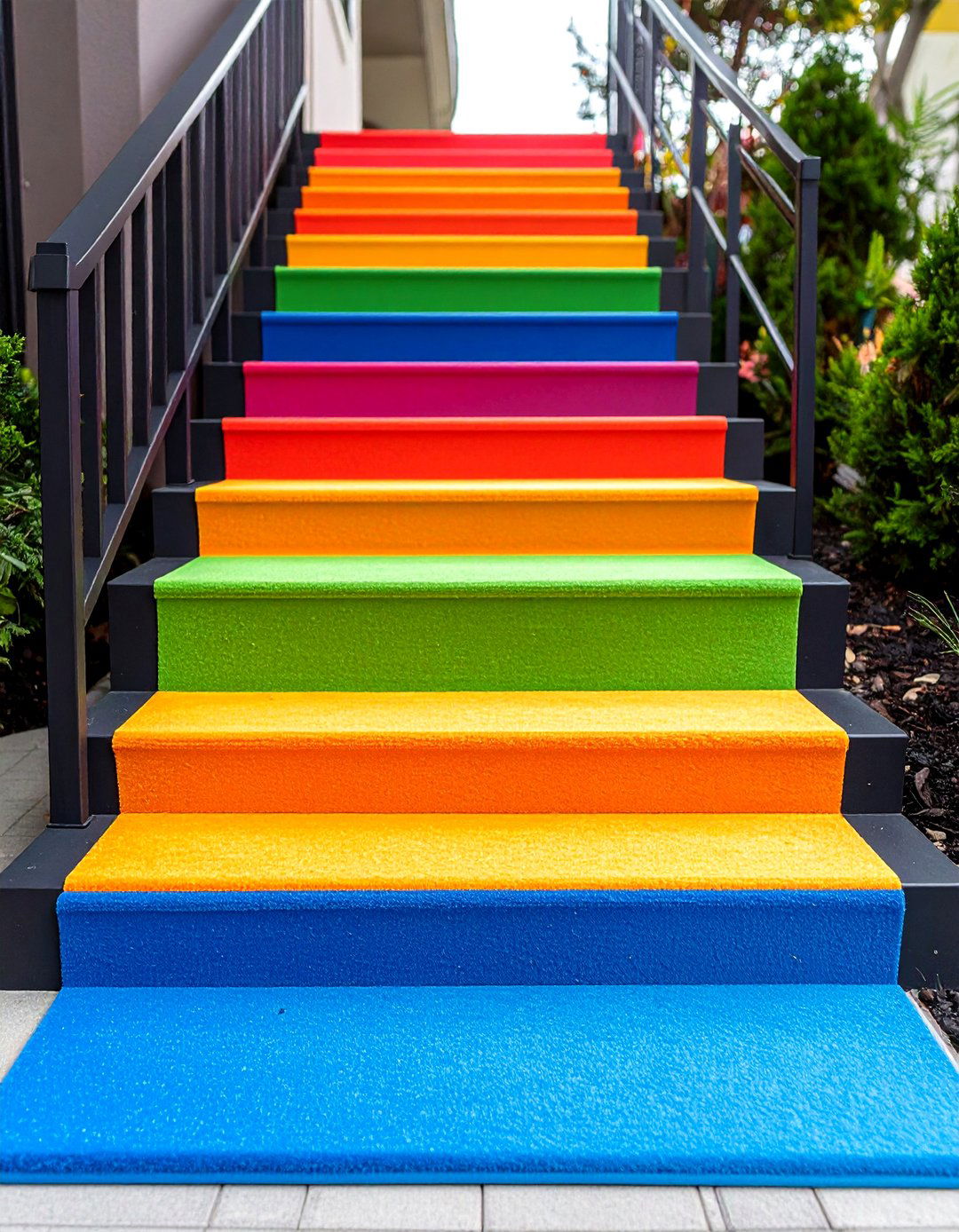
UV-stable, mildew-resistant polypropylene runners designed for patios also work wonderfully on indoor stairs, especially in sunlit entryways. These runners clean easily with a hose or vacuum and stand up to both moisture and heavy use. Choose flat-weave options in stripes or solids for seamless indoor-outdoor transitions.
20. Nautical Rope or Sisal Edging
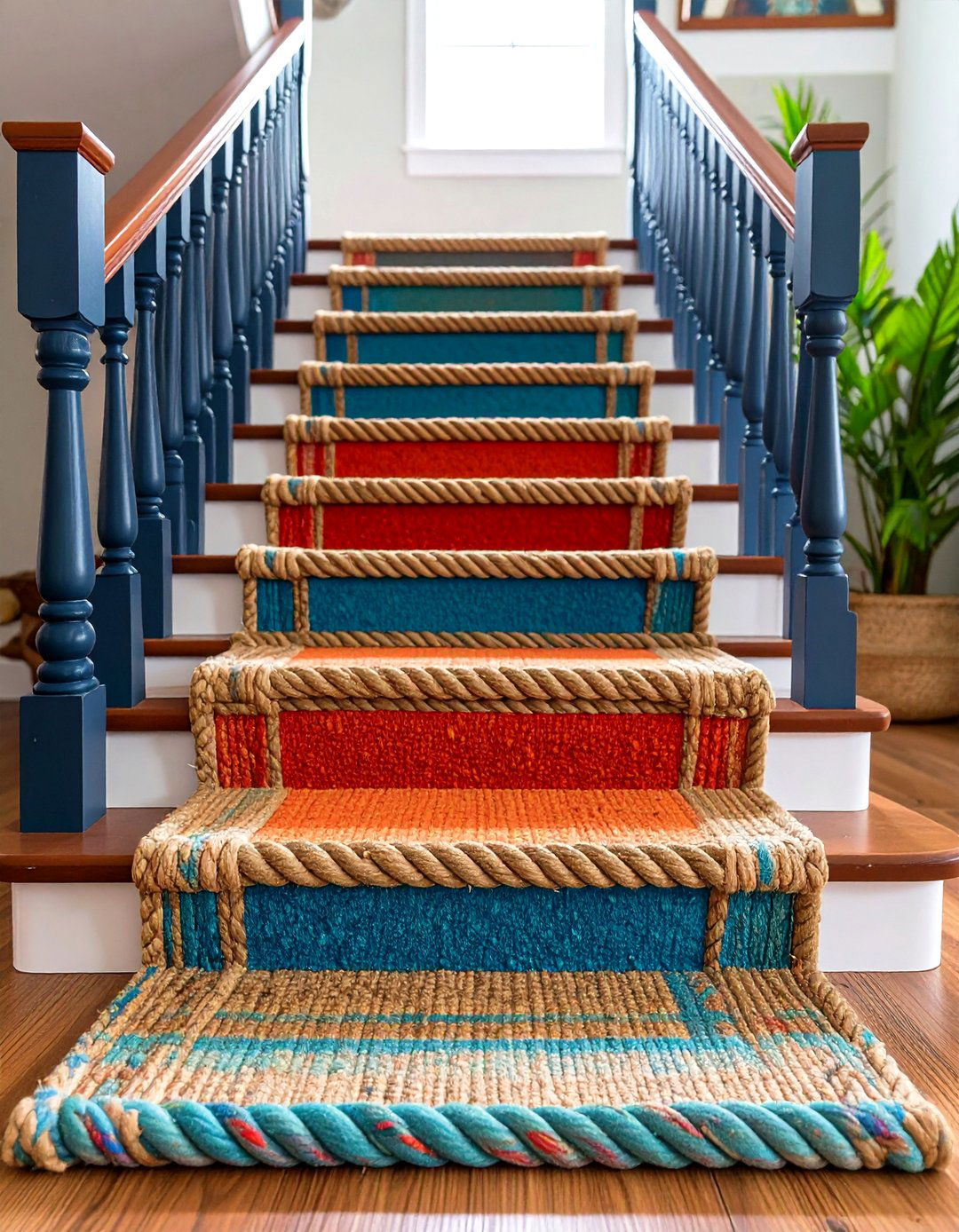
Incorporate a rope or sisal border on a simple sisal or jute runner for a subtle nautical touch—perfect in beach houses or coastal-inspired interiors. The braided edge provides extra durability where runners meet treads, and the rope accent adds handcrafted appeal. Paired with whitewashed risers and navy walls, this look anchors the theme beautifully.
Conclusion:
Stair runners are an easy yet transformative way to inject style, safety, and comfort into your home. Whether you lean toward bold patterns, natural textures, pet-proof practicality, or DIY ingenuity, there’s a runner solution to suit every aesthetic and budget. From classic stripes and geometric prints to sustainable fibers and custom patchwork, thoughtful runner selection and proper installation ensure your staircase remains a standout feature for years to come.


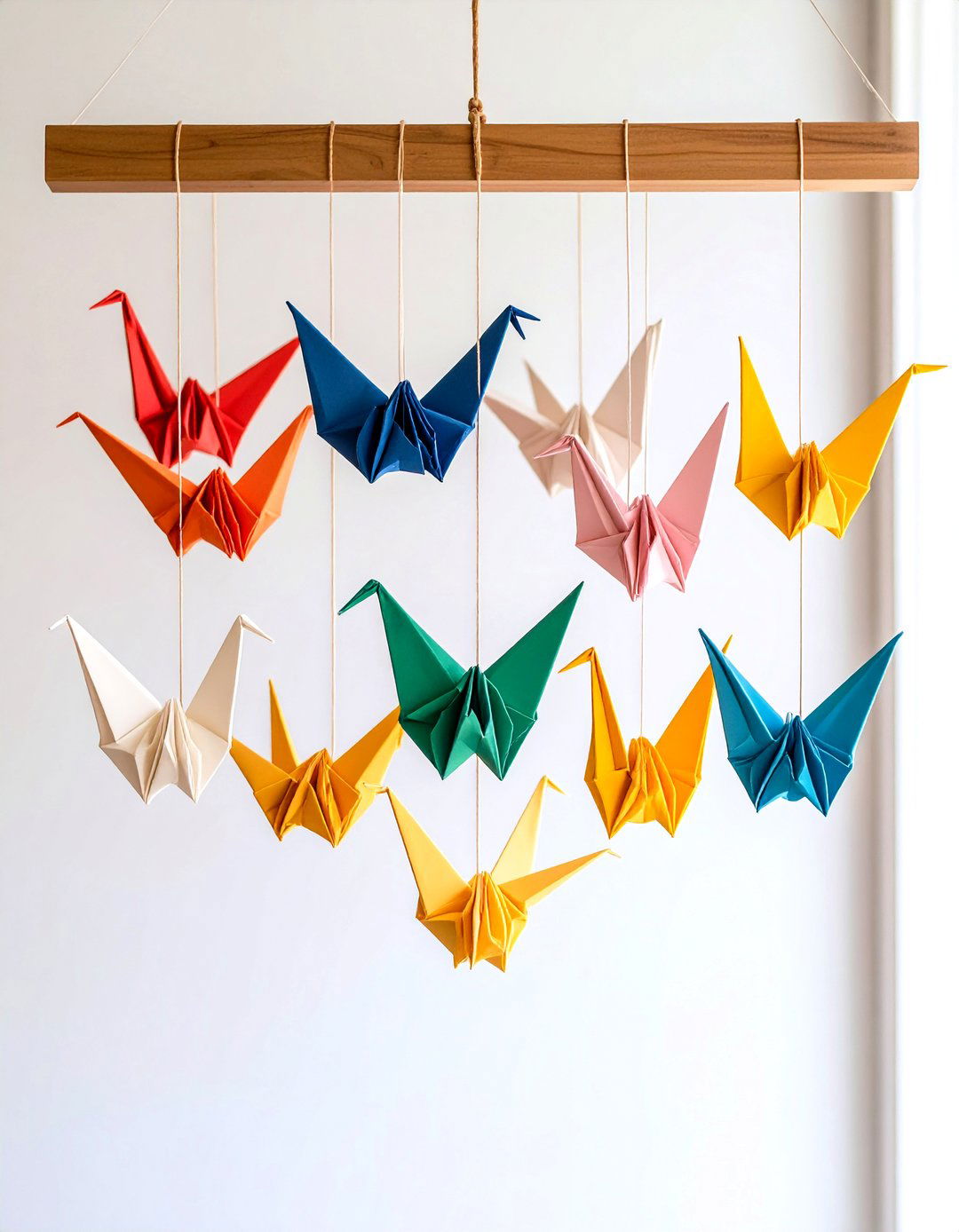
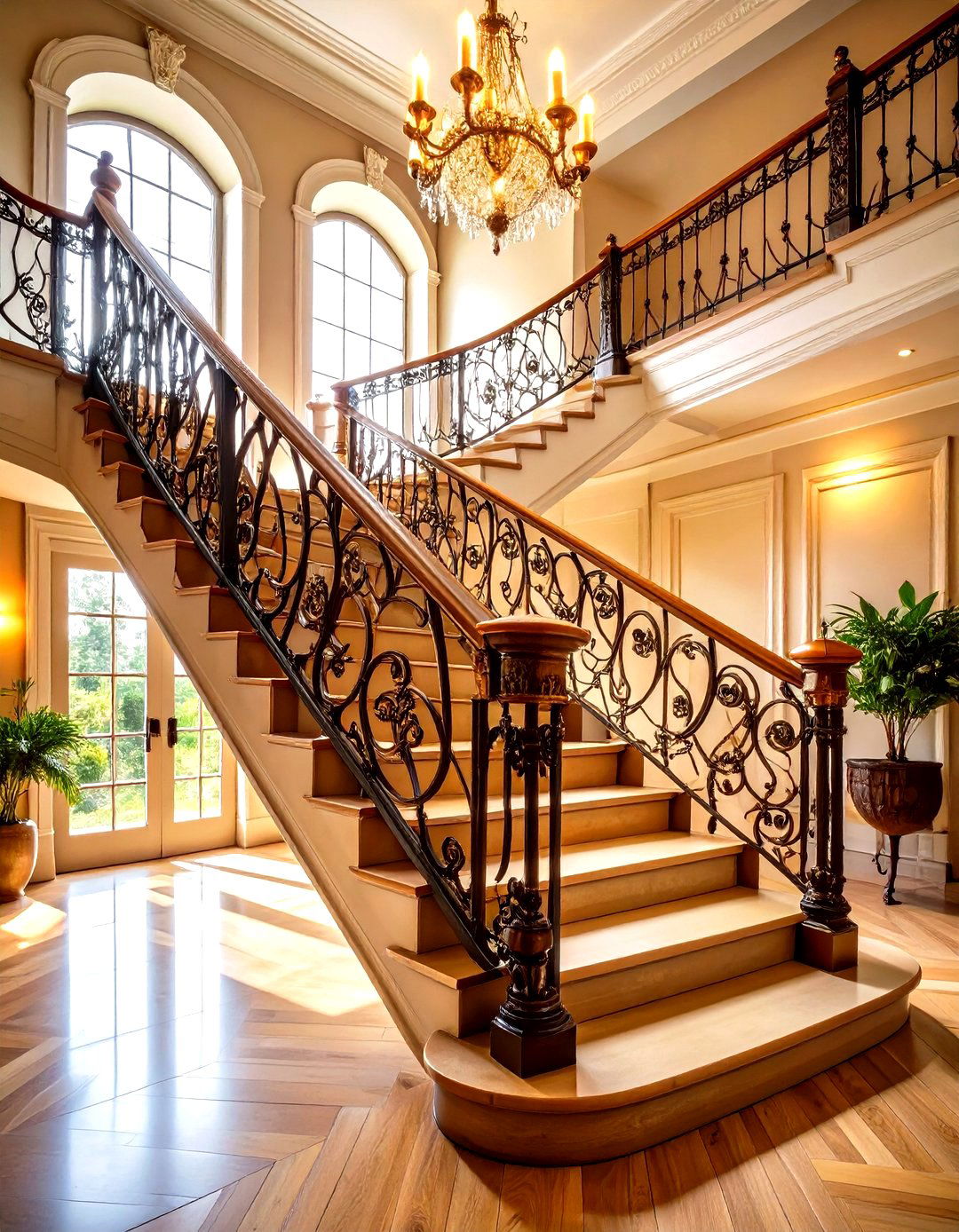

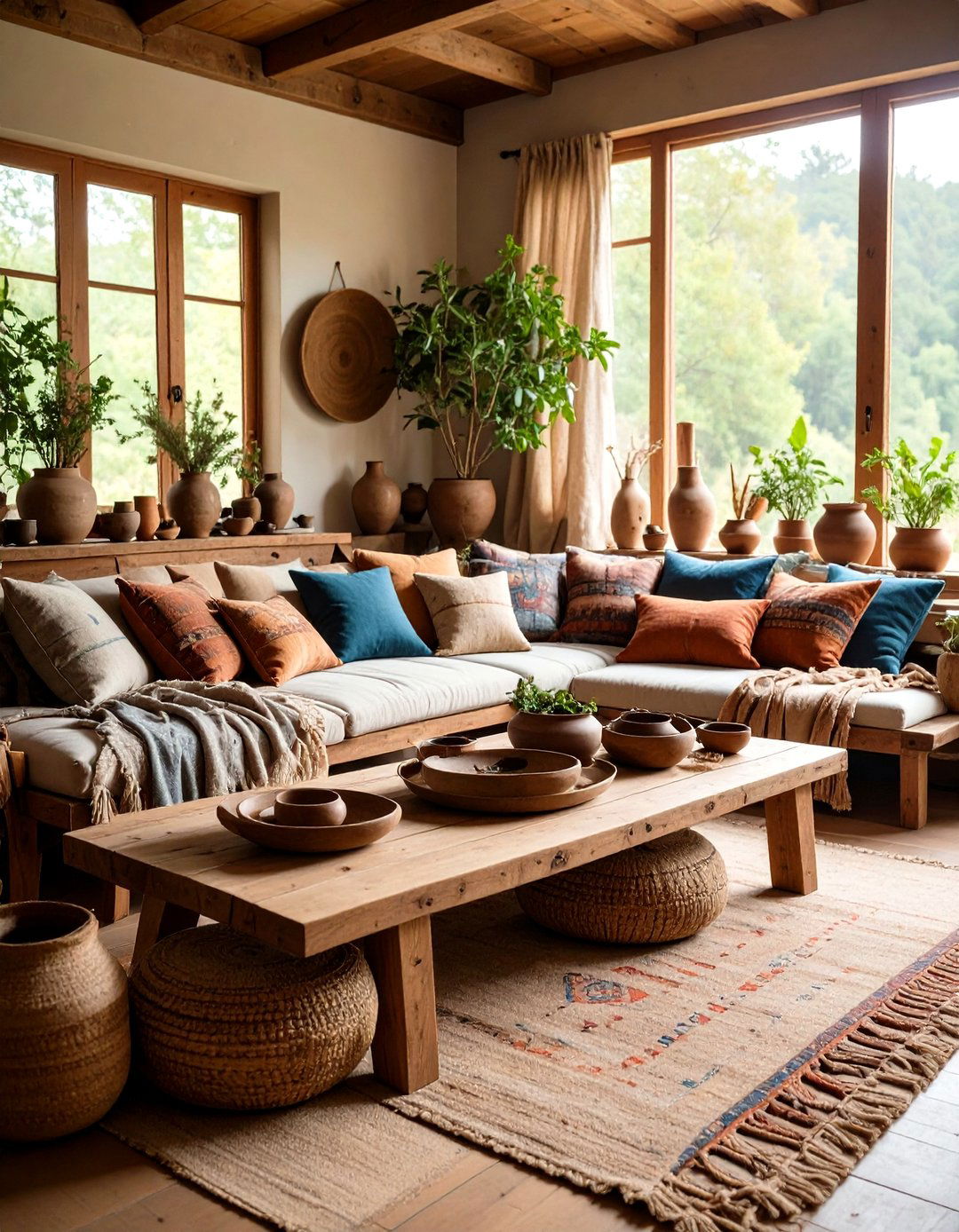
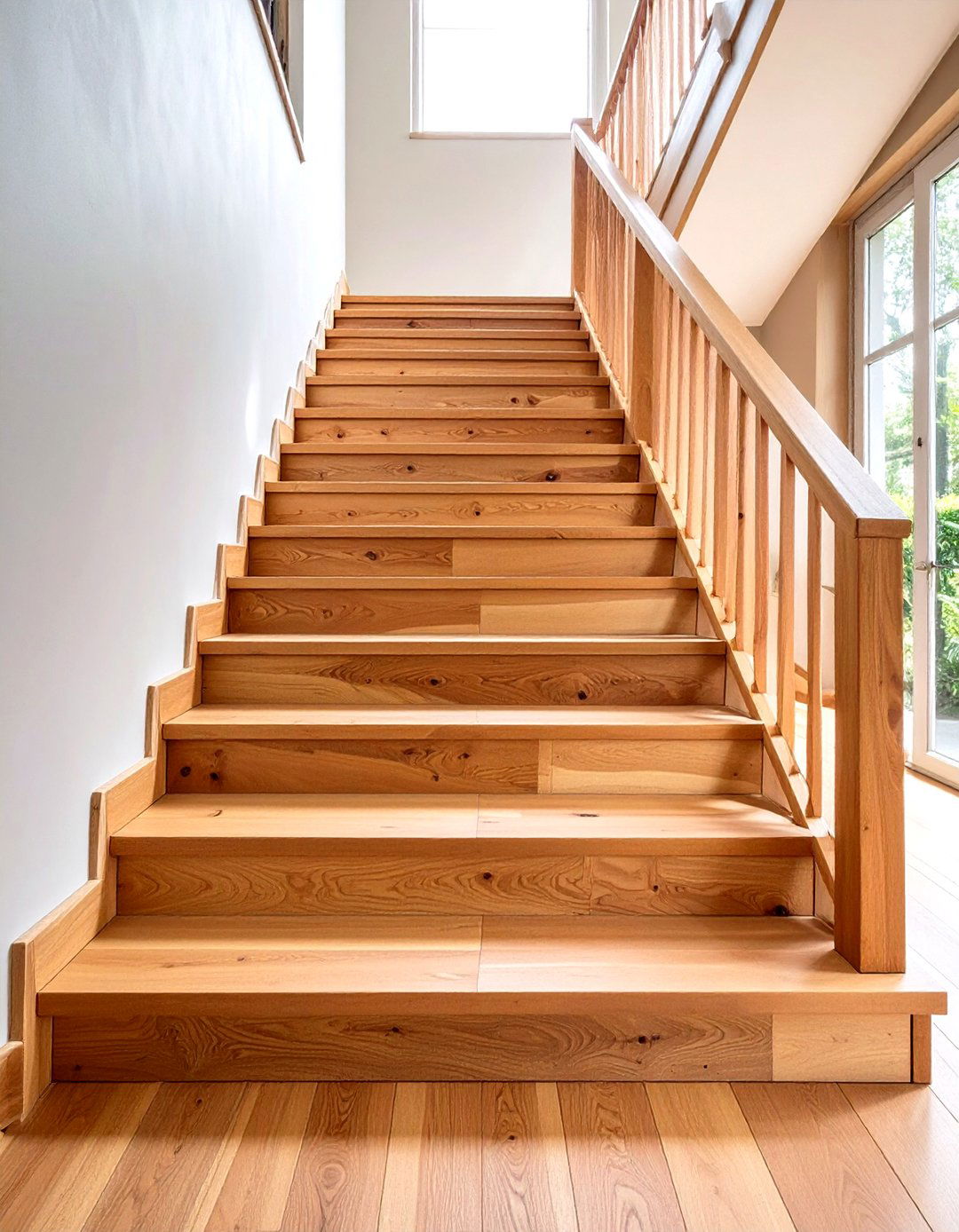
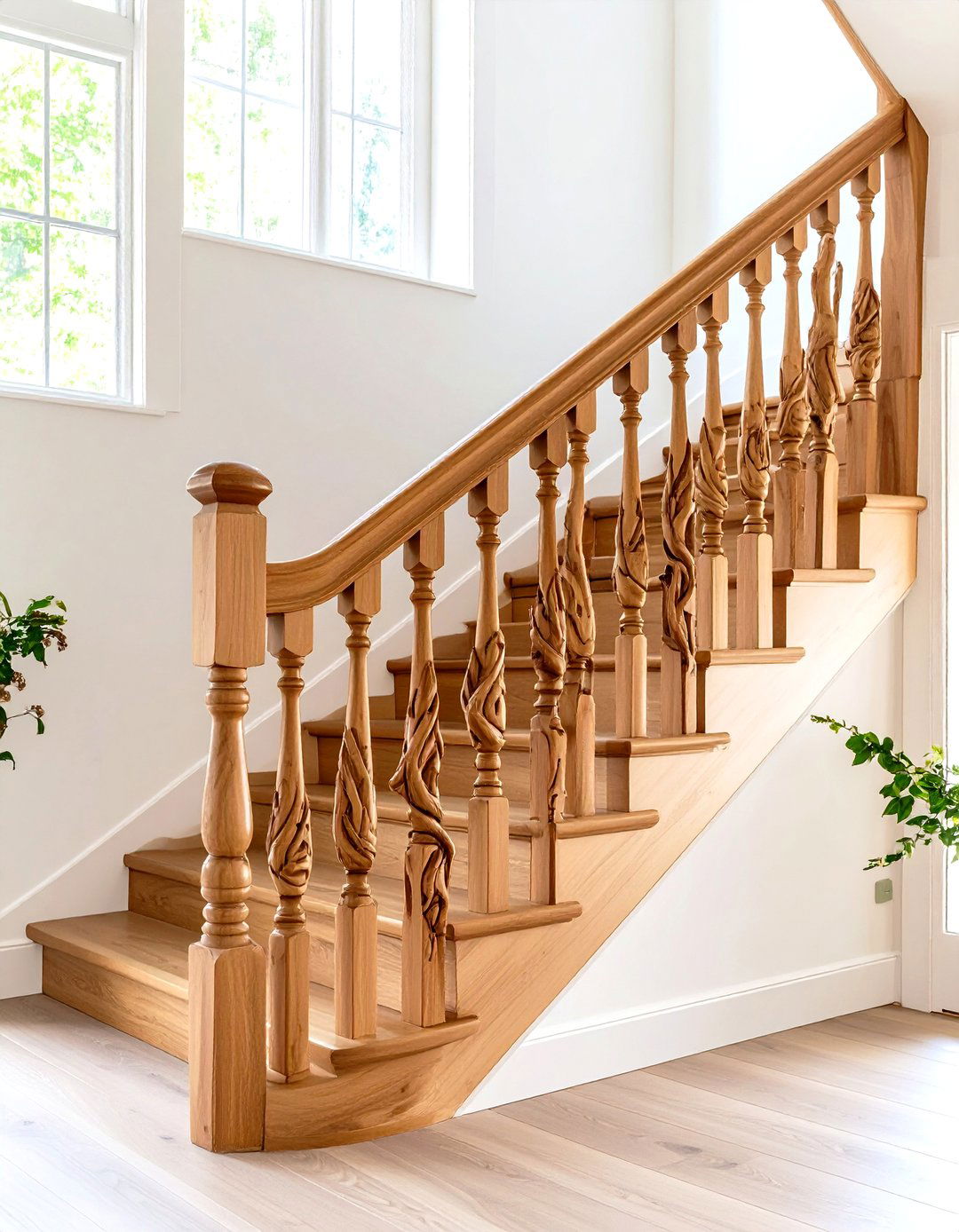

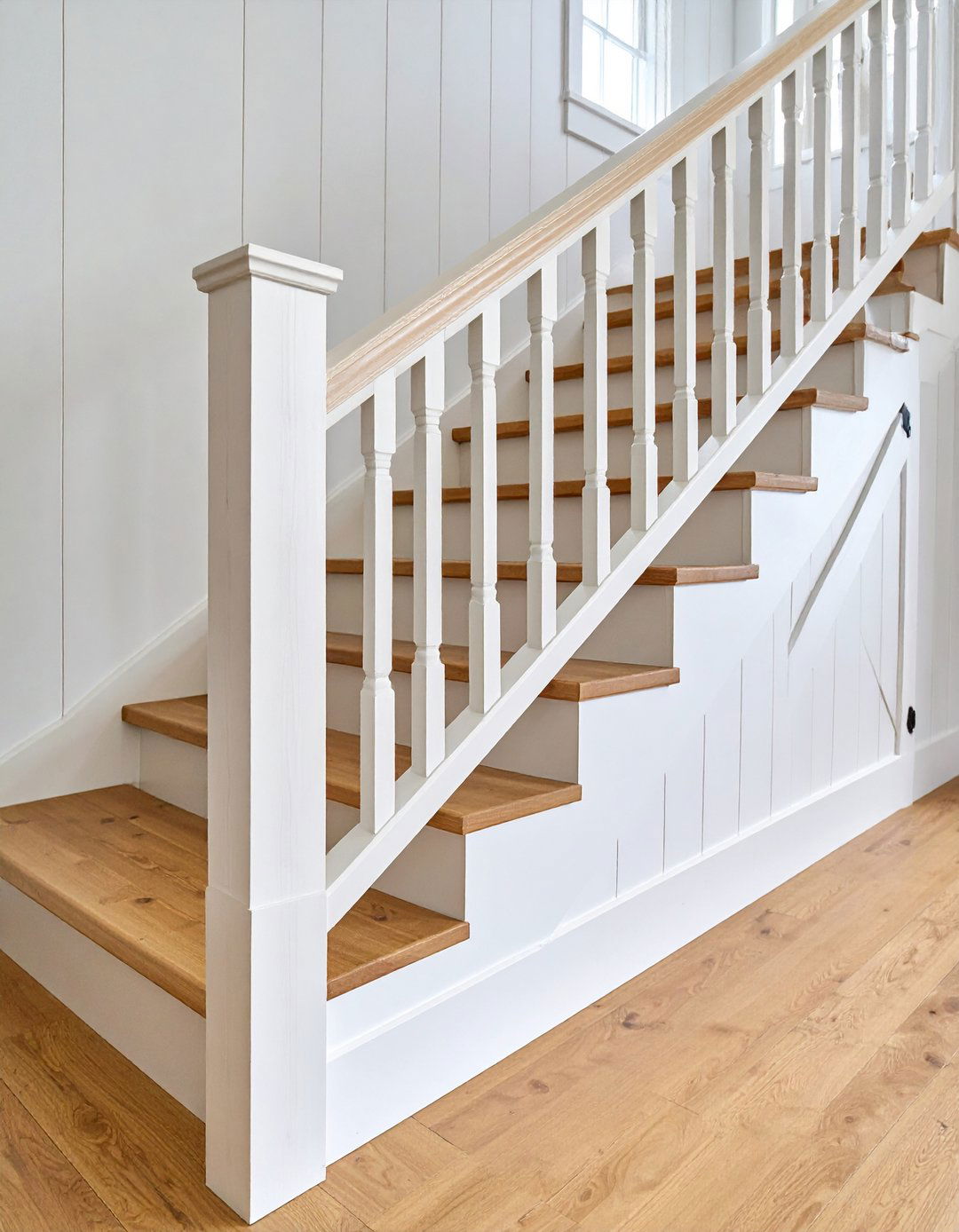
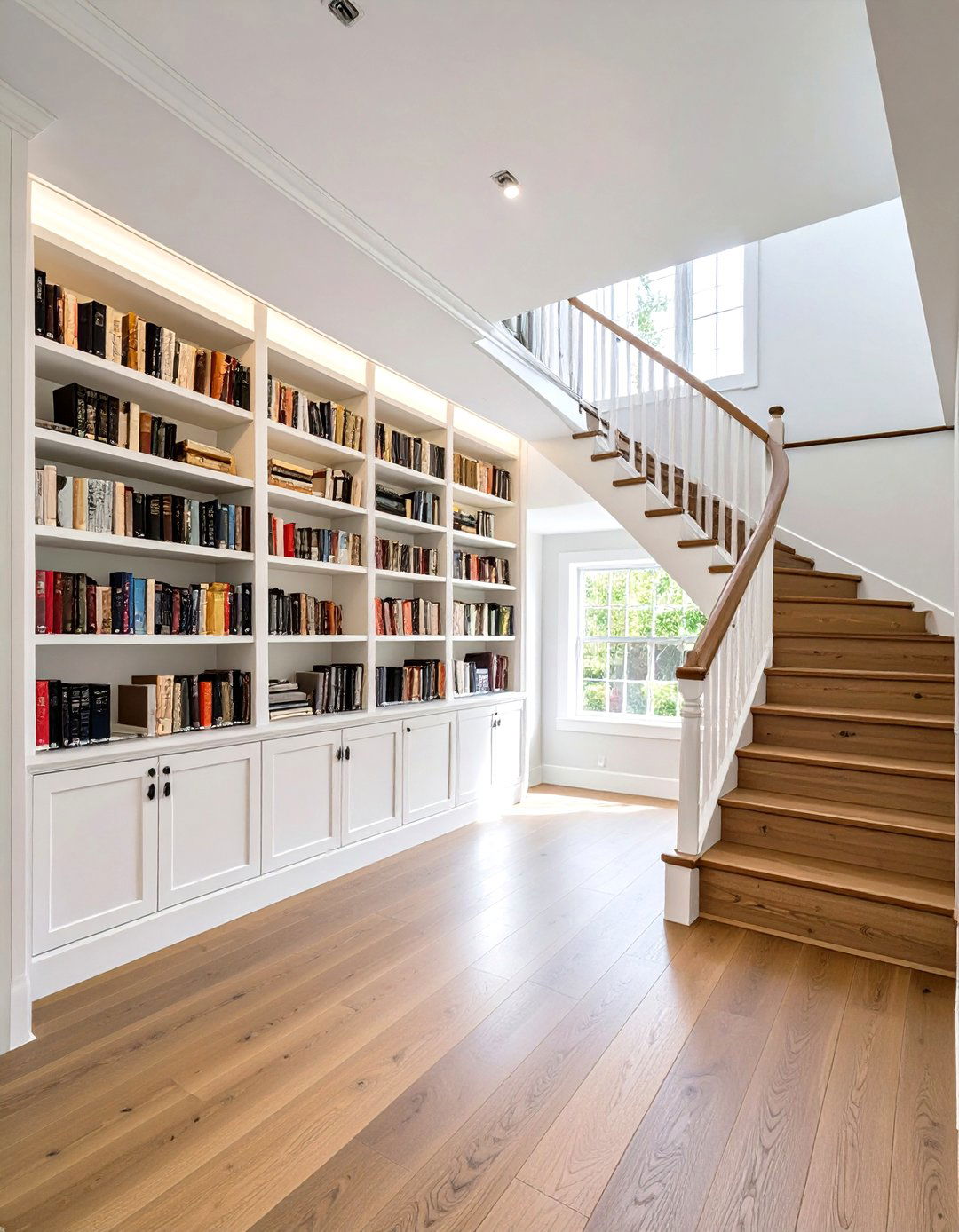
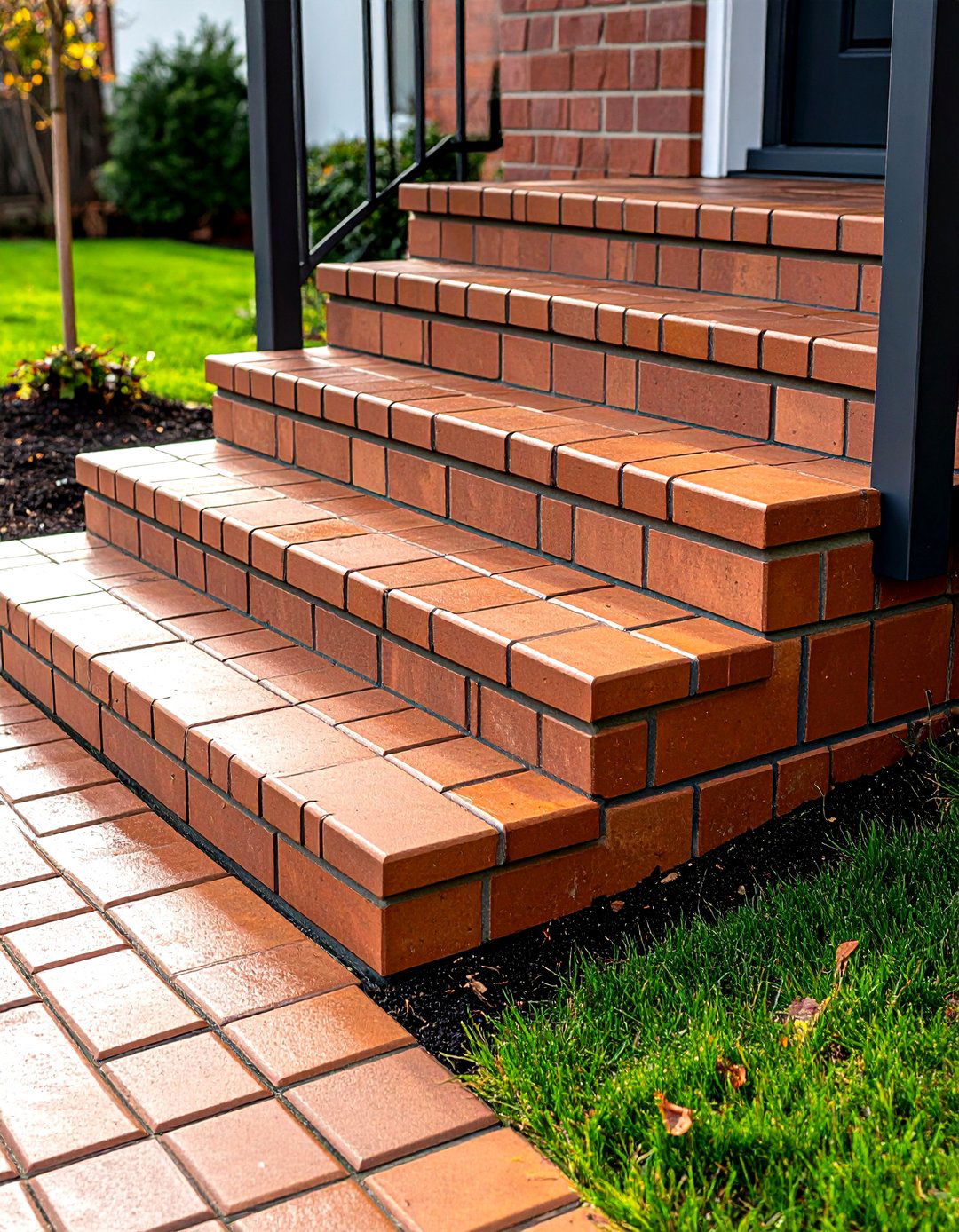

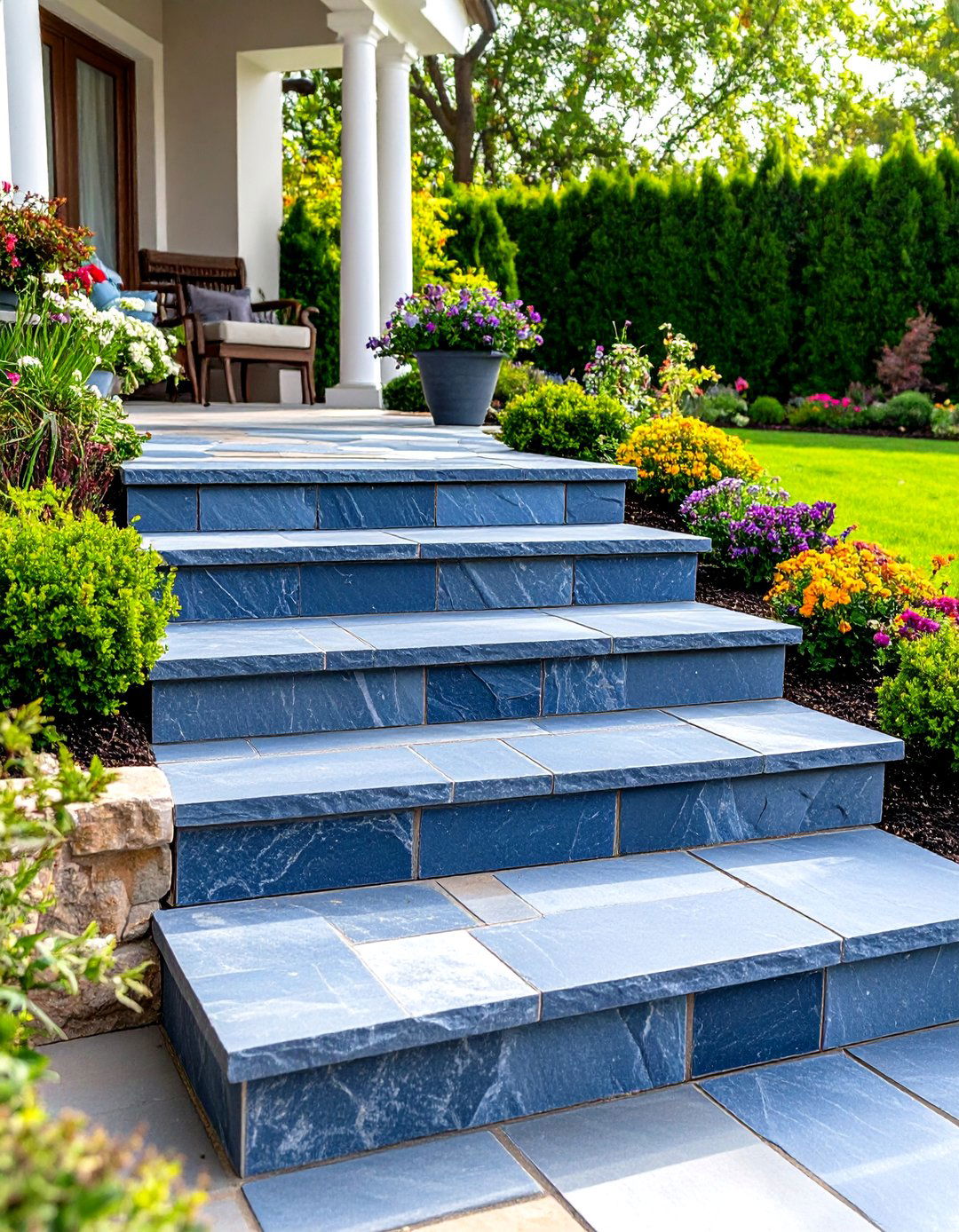
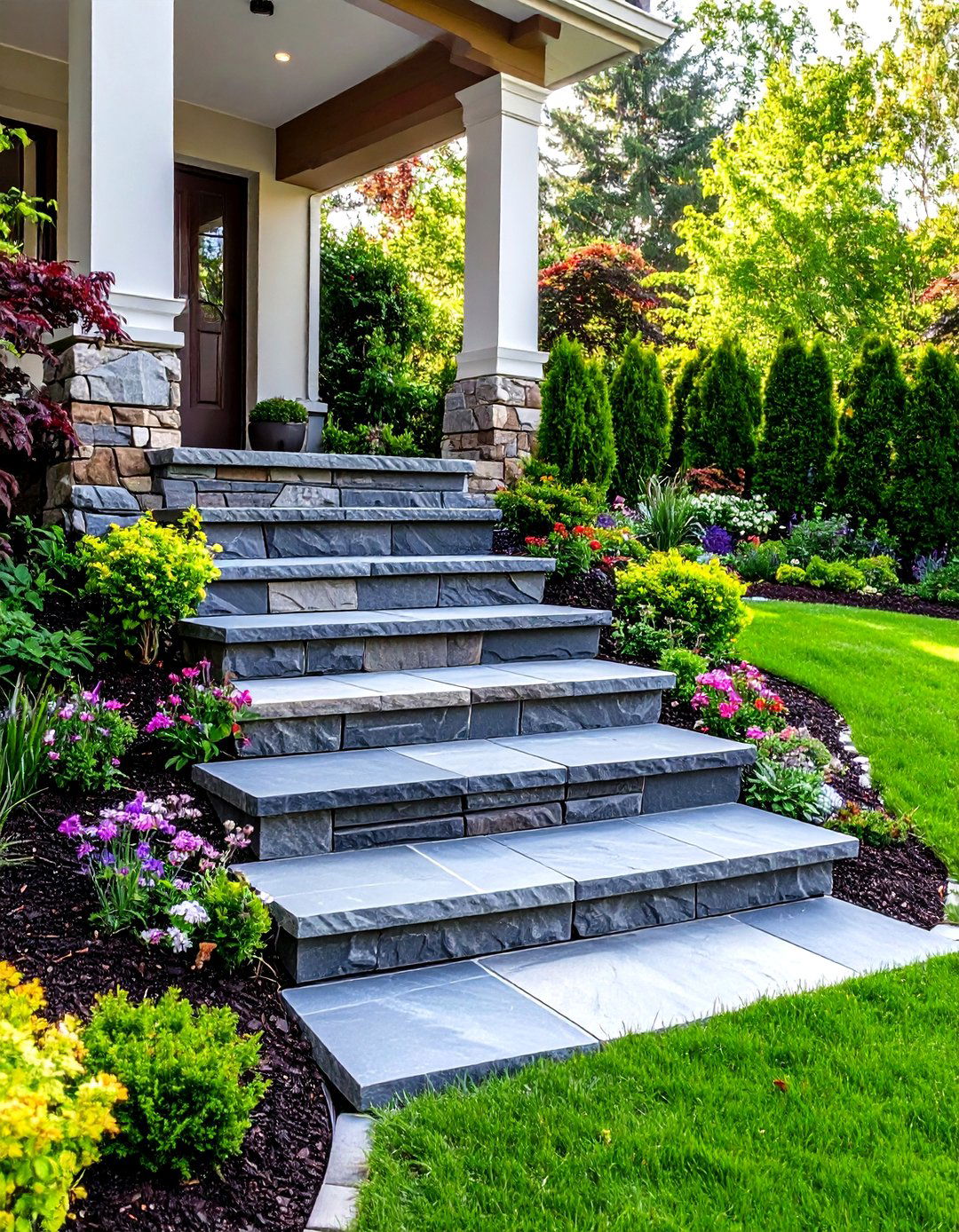
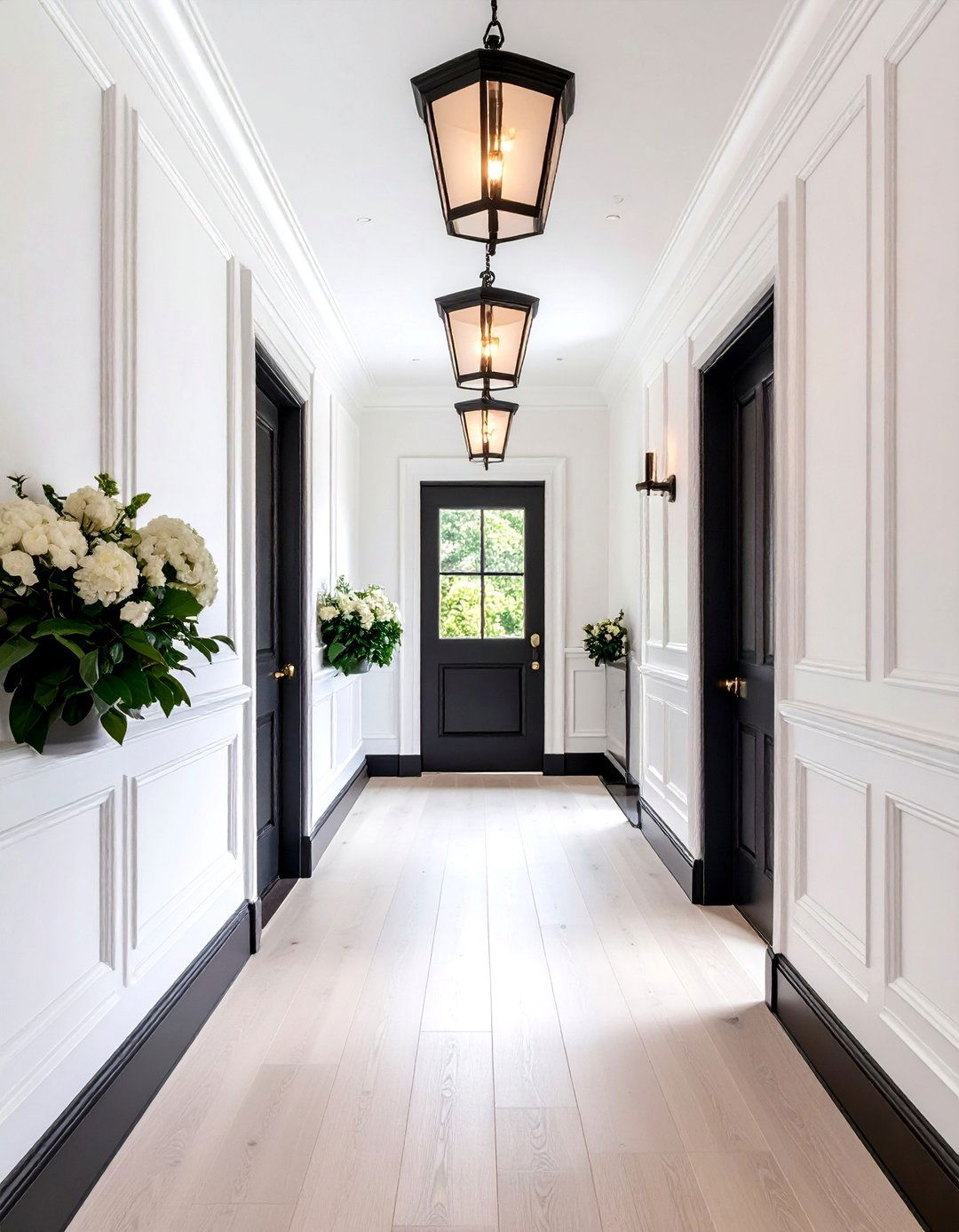
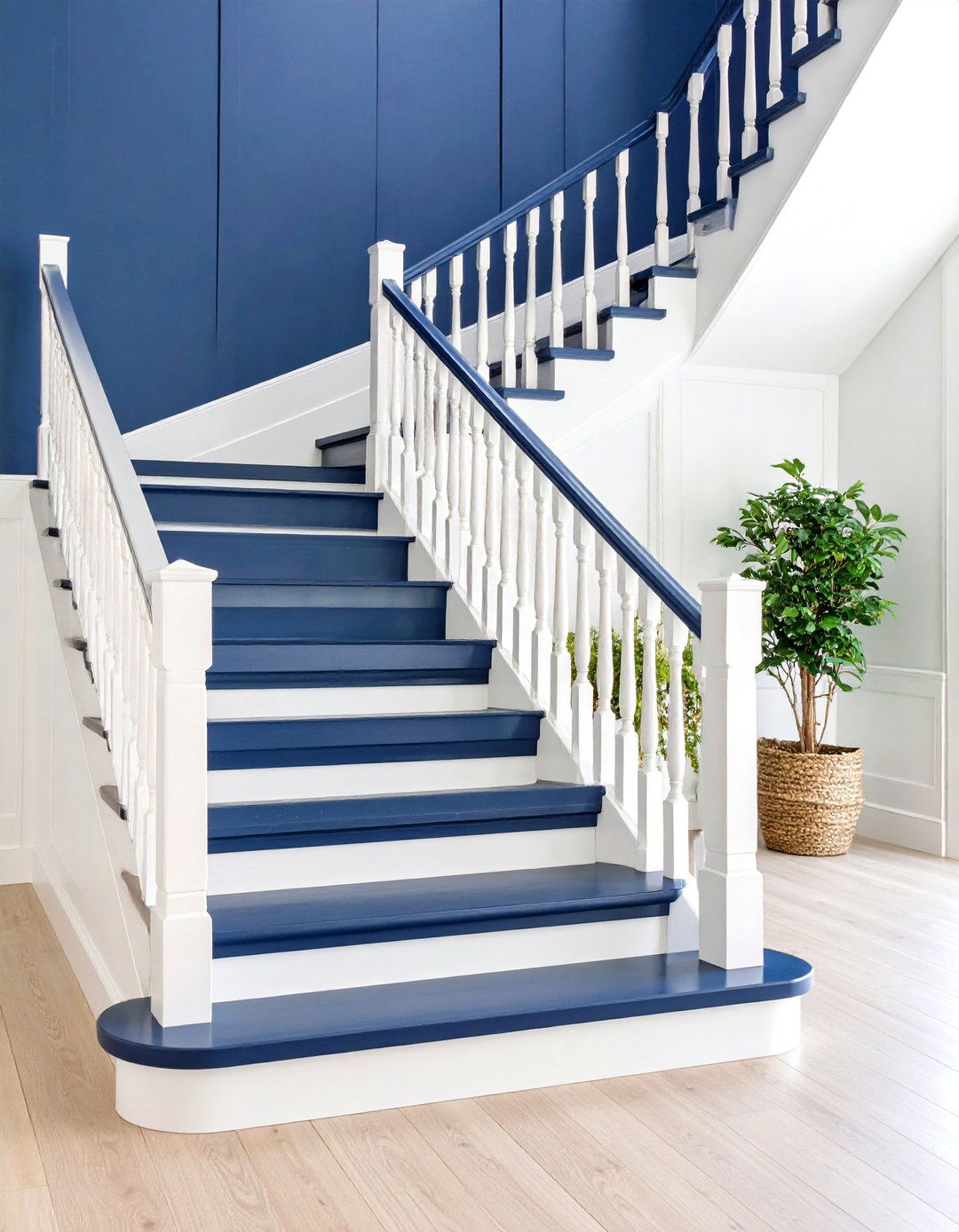
Leave a Reply